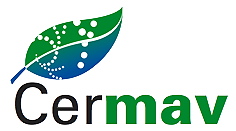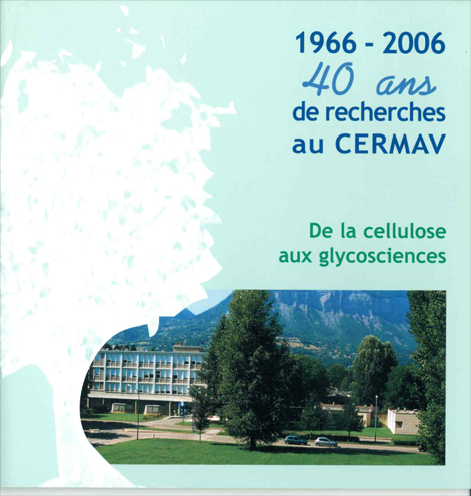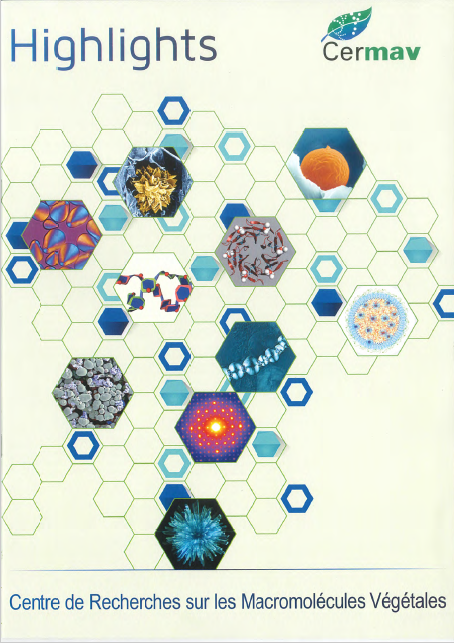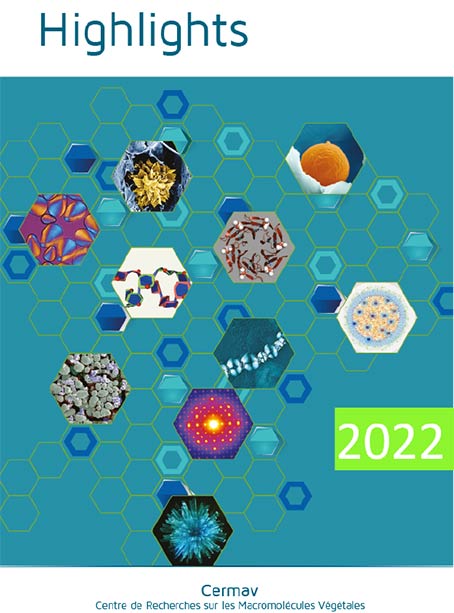Message from the direction

Dr Laurent Heux
CERMAV, a CNRS research unit (UPR 5301), will celebrate its 60th anniversary in 2026. For more than half a century, the laboratory has kept pace with societal changes by renewing and enriching its scientific themes. With historical fundamental research focused on cellulose and lignin, then on economically important plant polysaccharides, CERMAV’s themes now address various fields of glycoscience, including the synthesis or bioproduction of biologically active oligosaccharides, studies devoted to proteins involved in the processes of synthesis, degradation, modification, or recognition of sugars, the use of biomass as a source of renewable materials, neo-glycopolymers, materials for energy or health, bio-inspired materials, and more.
CERMAV is one of Europe’s leading research institutes in glycosciences and covers a wide range of topics, from structural biology to materials science, biochemistry, fine chemistry, and the physico-chemistry of polymers. Currently structured into five research teams, its scientific activity covers three major themes of significant societal importance: sugars and health, biomass recovery, and materials for advanced technologies. The fields of application for this research are extremely varied, ranging from human, animal, and plant health to the design of bio-based materials for energy, organic electronics, and new packaging.
Well integrated into the Grenoble research ecosystem, CERMAV is a member of the Grenoble Institute of Molecular Chemistry (ICMG, UAR 2607) alongside the Department of Molecular Chemistry (DCM, UMR 5250) and the Department of Molecular Pharmacochemistry (DPM, UMR 5063), with which it shares a range of equipment (NMR, electron and near-field microscopy, mass spectrometry, etc.). It maintains a strong partnership with the University of Grenoble Alpes (UGA) through various Idex programs, including the transdisciplinary Glyco@Alps program, as well as through the strong involvement of its teacher-researchers in various university bodies. It is also heavily involved in Carnot PolyNat projects for aspects of bio-based materials, Labex Arcane (bio-inspired and bio-targeted chemistry), MateriAlps (materials science), and Gimed (medical devices). It maintains close relationships with major instruments in Grenoble (ESRF, ILL, etc.), major European glycoscience institutes (KTH, MPI Potsdam, biomaGUNE, etc.), and numerous international universities (University of Cambridge, University of Geneva, University of Tokyo, etc.).
Highly involved in promoting its fundamental research, which is one of the missions of the CNRS, the laboratory has participated in the launch of three start-ups (including two since 2020) in the field of bio-production of oligosaccharides for health applications, and bio-based additives for reinforcing cellulosic materials. Finally, the unit is committed to making a significant contribution to training through research in order to prepare students and young researchers for the professional world, whether industrial or academic.
Director : Dr Laurent Heux
Management Assistant and HR Manager: Isabelle Caldara
Head of Administration and Management : Dr Carole Speziani Millet
Contact : direction@cermav.cnrs.fr
Missions
Cermav is a research laboratory of CNRS, more particularly within the CNRS Institute of Chemistry. Cermav is the place of constant interaction with different actors: higher education, other organizations, business sector, and foreign partners … it participates in missions defined by the CNRS :- development and production of knowledge in all disciplines
- exploiting the results of research
- training and research
- dissemination of scientific and technical information
Collaborations
Located on the campus of Grenoble, the expertise of CERMAV is amplified by an exceptional scientific environment: on the one hand, l’Université Grenoble Alpes (UGA) and the Institut Polytechnique de Grenoble (INPG) in the East-Campus and, on the other hand, the Commissariat à l’Energie Atomique (CEA) and the large European facilities – the Institut Laue Langevin (ILL) and the European Synchrotron Radiation Facility (ESRF)– in the West Campus.
The Cermav is involved the Grenoble scientific community by sharing human and financial contributions in the areas of analytical techniques such as nuclear magnetic resonance, mass spectroscopy, X-ray diffraction, electron microscopy, information technology, etc. Access more significant to large instrumentation (ILL, ESRF) is also part of the essential tools that we put into play to develop our scientific programs.
At the international level, the Cermav maintains relationships with about forty foreign laboratories and institutes and there are as many collaborations with developing countries as with industrialized countries. For many years his skills and expertise enable the formation of foreign researchers and collaborations, that have led to many joint publications and the organization of scientific events too.
Organization
History
In 1957, Professor Marcel Chêne, ‘directeur des études’ at the École française de papeterie (EFP), proposed the creation in Grenoble of an Institute of cellulose and lignin, taking up the idea, launched in 1922 by the director of the electrotechnics institute and EFP, Professor Louis Barbillon, to establish a Cellulose Institute to complement the activities of the EFP and launch applied research in collaboration with the paper activities. In June 1960, a report about the acquisition of a site on the campus intended for the implantation of the institute, was sent to Professor Georges Champetier (Director of the School of Physics and Industrial Chemistry, member of the Institute, and Director General of the CNRS), who was at that time one of the only French academics to have carried out work on cellulose. The construction of the initial building was completed in 1966. In the same year, the CNRS changed the name of the institute as Centre de recherches sur les macromolécules végétales, whose work should focus on “the study of cellulose, lignin and other plant constituents” and so attributes its acronym to the Cermav.





